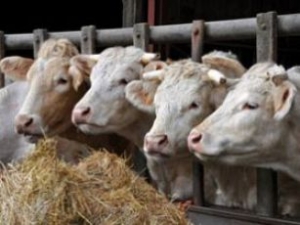Health and Welfare
Problem Solving Time Warp

From a management prospective, solving a problem involves four key steps:
-
Identifying that a problem exists
-
Analysis of possible solutions
-
Implementing the best solution
-
Monitoring the response
Schematic representation of the problem-solving process
How electronic monitoring aids problem solving
Electronic animal monitoring improves two aspects of the problem-solving process compared with traditional herd management: 1) Less time needed to identify a problem from its onset, and 2) Faster feedback on cows’ response to the implemented solution.
In addition, identifying problems more quickly allows management to better understand the cause-and-effect relationship between the problem and its symptoms and choose the appropriate response.
Let’s look at an example of this concept.
With last fall’s wet harvesting conditions, preventing mycotoxin issues is a very relevant management challenge. Let’s take a 35,000-foot view of the mycotoxin problem-solving process in a traditionally-managed dairy compared with an electronically-monitored dairy.
In a traditionally-managed dairy, it may take days or months to discover mycotoxin contamination based on reproductive, health, transition and production symptoms. (Learn more about mycotoxin symptoms here). How much time will pass until issues appear in a manner that will draw management’s attention to the problem? Does anyone hit the panic button after one bad pregnancy check?
When these signs are identified, backtracking to identify their source can be a significant strain on management resources. And, the manager risks misclassifying the true root of the problem due to the time that elapsed since it happened.
On a traditionally managed dairy, it’s also difficult to monitor cows’ response to the chosen “best solution.” When will management know that it solved the issue? It could take anywhere from days to months until management can rest assured that the problem was remedied. What about the total cost of choosing the wrong “best solution” and beginning the problem-solving cycle once again?
High-level management depends on making the right decision early, preferably before the situation becomes a train wreck.
Quick response to feed issue
Let’s compare an electronically-monitored dairy’s fast and accurate response to a feed quality issue.
A Southeastern U.S. dairy that purchases car loads of distillers grains received a load that had gotten wet. The managers thought that because the load had gotten wet only a day or two before feeding, it would not be a problem and added the ingredients to the cows’ ration.
The next day, electronic monitoring reports showed a drastic drop in cows’ rumination as a result of eating the ration with the wet distillers grains. After seeing this negative effect, the wet distillers grains were immediately removed from the ration. Within hours rumination levels returned to pre-change levels, minimizing the negative impact on the herd. The rumination monitoring report below shows the dramatic cow response to the problem and the resulting solution.
In this case, the problem was solved in warp speed.















